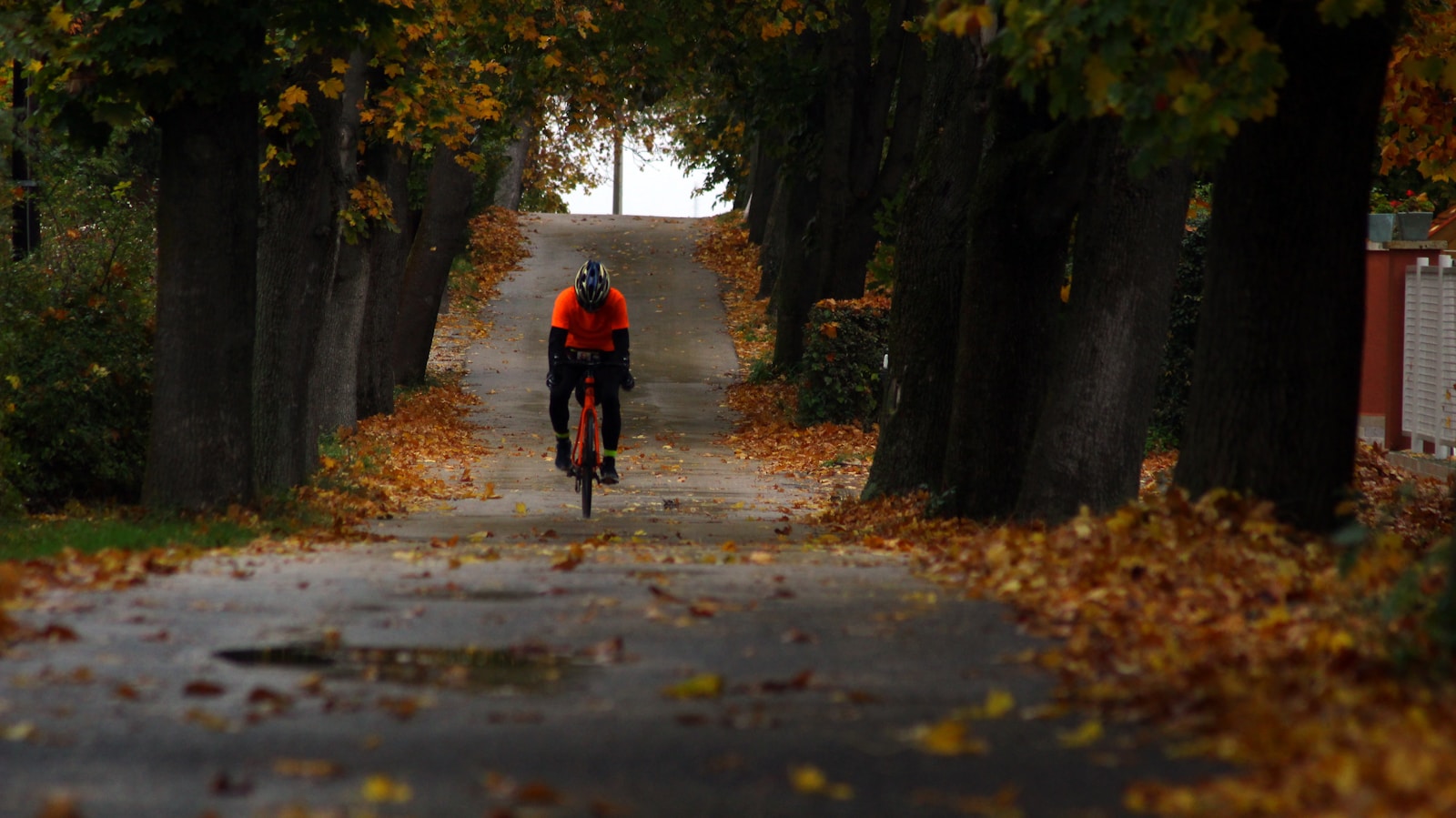🧠 The Science of Flow State
Unlock the mental keys to transformative cycling experiences
Every cyclist knows the feeling: some days you’re grinding up hills like you’re towing a trailer, while other days you float up the same climbs feeling superhuman. The difference isn’t always in your legs—it’s in your head. Understanding the psychology behind these magical rides can help you create more of them.
🎯 The Flow State Formula
Psychologist Mihaly Csikszentmihalyi identified flow state as the optimal experience where challenge perfectly matches skill level. In cycling, this sweet spot occurs when:
- The route difficulty matches your current fitness
- You’re fully present, not dwelling on work or life stress
- Clear goals exist (reaching the summit, maintaining pace)
- Immediate feedback comes from your body and bike
The Neuroscience of Effortless Riding
🧬 Endorphin Release
The famous “runner’s high” applies to cycling too. After 20-30 minutes of moderate effort, your brain releases endorphins—natural painkillers that create euphoria and reduce perception of effort.
🎭 Prefrontal Shutdown
During intense efforts, blood flow shifts from your prefrontal cortex (responsible for self-criticism) to motor areas. This “transient hypofrontality” quiets your inner critic, letting you ride purely.
Environmental Psychology: External Factors
🌡️ The Temperature Sweet Spot
Research shows cognitive and physical performance peaks between 50-65°F (10-18°C). Your brain doesn’t have to work as hard on temperature regulation, leaving more resources for riding.
Pro tip: Start slightly cool—you’ll warm up perfectly within 10 minutes.
🎵 The Rhythm Connection
Pedaling creates a meditative rhythm that synchronizes brainwaves, similar to drumming or chanting in ancient practices. This entrainment effect:
- Reduces anxiety and mental chatter
- Improves focus and reaction time
- Creates a natural moving meditation
- Syncs breathing with effort automatically
Psychological Preparation Techniques
🧘 Pre-Ride Visualization
Elite athletes use visualization to prime neural pathways. Before your ride:
- Close your eyes and imagine the route
- Feel the pedals turning smoothly beneath you
- Visualize cresting hills with power and grace
- Imagine the satisfaction of completing your ride strongly
Research shows: 10 minutes of visualization activates the same motor neurons as actual movement, preparing your body for performance.
🎯 Intention Setting vs. Goal Fixation
Instead of rigid goals (“I must average 18 mph”), set flexible intentions:
❌ Rigid Goals
- Create pressure and anxiety
- Lead to negative self-talk
- Ignore body signals
✅ Flexible Intentions
- “I’ll ride with good form”
- “I’ll listen to my body”
- “I’ll enjoy the journey”
Breaking Through Mental Barriers
🔄 The Cognitive Reframe Technique
When suffering sets in, your interpretation determines your experience:
| Negative Frame | Positive Reframe |
|---|---|
| “My legs are dying” | “My legs are getting stronger” |
| “This hill is killing me” | “This hill is building my power” |
| “I can’t keep up” | “I’m riding my own perfect pace” |
The Social Psychology of Group Rides
👥 The Drafting Effect Goes Beyond Physics
While drafting saves 30% energy physically, the psychological benefits are equally powerful:
- Social facilitation: Others’ presence enhances performance
- Collective rhythm: Group synchrony reduces perceived effort
- Shared suffering: Misery really does love company
- Accountability: Harder to quit when others are watching
Creating Your Perfect Ride Protocol
🚴 The 5-Step Flow Formula
1. Preparation Ritual
Create consistent pre-ride habits that signal your brain it’s time to perform.
2. Warm-Up Mindfulness
Use the first 10 minutes to scan your body and settle into rhythm.
3. Effort Calibration
Find the sweet spot where challenge meets capability.
4. Present-Moment Anchors
Use breath, pedal stroke, or scenery to stay grounded.
5. Completion Celebration
Acknowledge your effort regardless of metrics.
🎯 The Ultimate Truth
The perfect ride isn’t about watts, speed, or distance. It’s about finding that magical intersection where body, mind, and environment align. When you stop chasing perfection and start embracing the experience, that’s when cycling transforms from exercise into meditation, from sport into art.
🚀 Your Next Ride Challenge
Tomorrow, try riding without any devices. No computer, no Strava, no metrics. Just you, your bike, and the road. Notice how your perception shifts when you ride by feel instead of data. You might discover that your best rides aren’t your fastest—they’re the ones where you’re most present.
Remember: Every time you clip in, you have the opportunity to create something special. The perfect ride isn’t found—it’s crafted through the beautiful intersection of preparation, presence, and letting go.




Brilliant article! As a sports psychologist who works with elite cyclists, I can confirm the science is spot-on. One addition: heart rate variability (HRV) is a powerful indicator of when you’re primed for flow state. On high HRV days, athletes report 60% more flow experiences. Consider checking your morning HRV to predict those magical ride days!
Dr. Peterson, that’s a fascinating insight about HRV! We’re actually developing a morning routine guide for cyclists that incorporates HRV monitoring. Would love to collaborate on a follow-up article about using biometrics to optimize ride experiences. The intersection of technology and intuition in cycling is such rich territory.
This article hits home! After 20 years of chasing watts and KOMs, I finally discovered flow state through meditation. Now I lead ‘mindful rides’ where we focus on breath and presence instead of speed. The transformation is incredible – riders who join regularly report not just better performance but reduced anxiety and improved life satisfaction. Cycling as moving meditation is a game-changer!
The section on ‘transient hypofrontality’ is particularly well-explained! For those interested in the deeper neuroscience: during high-intensity cycling, we also see increased production of BDNF (brain-derived neurotrophic factor), which is why many cyclists report enhanced creativity and problem-solving after rides. It’s literally growing new neural connections. The bike is the ultimate brain trainer!